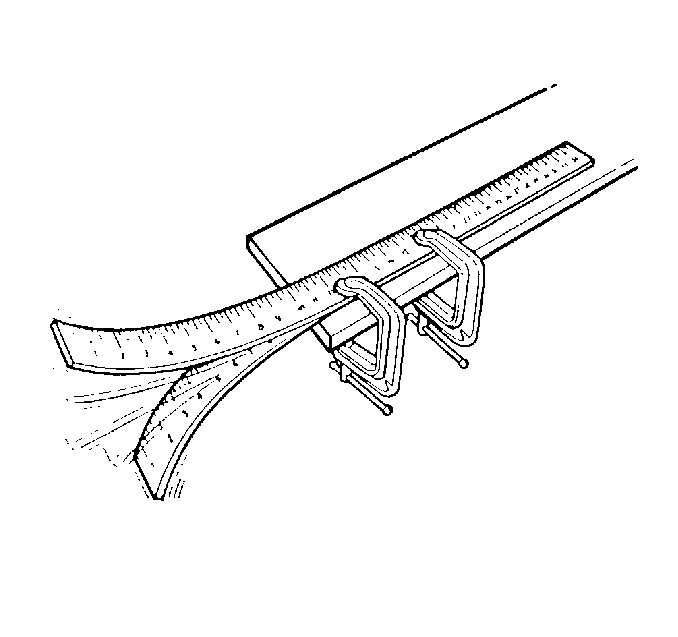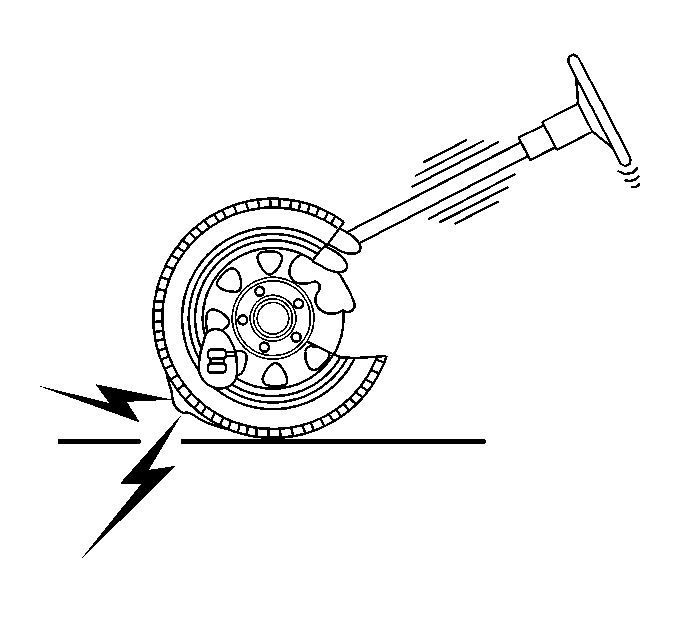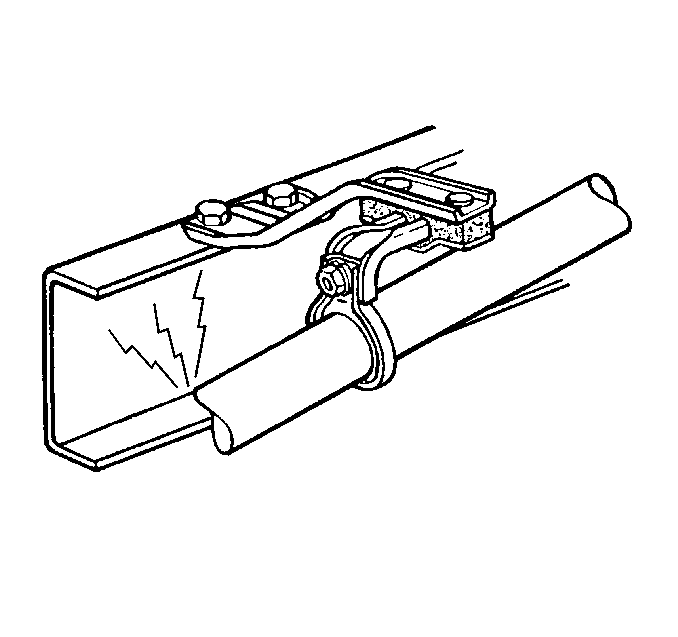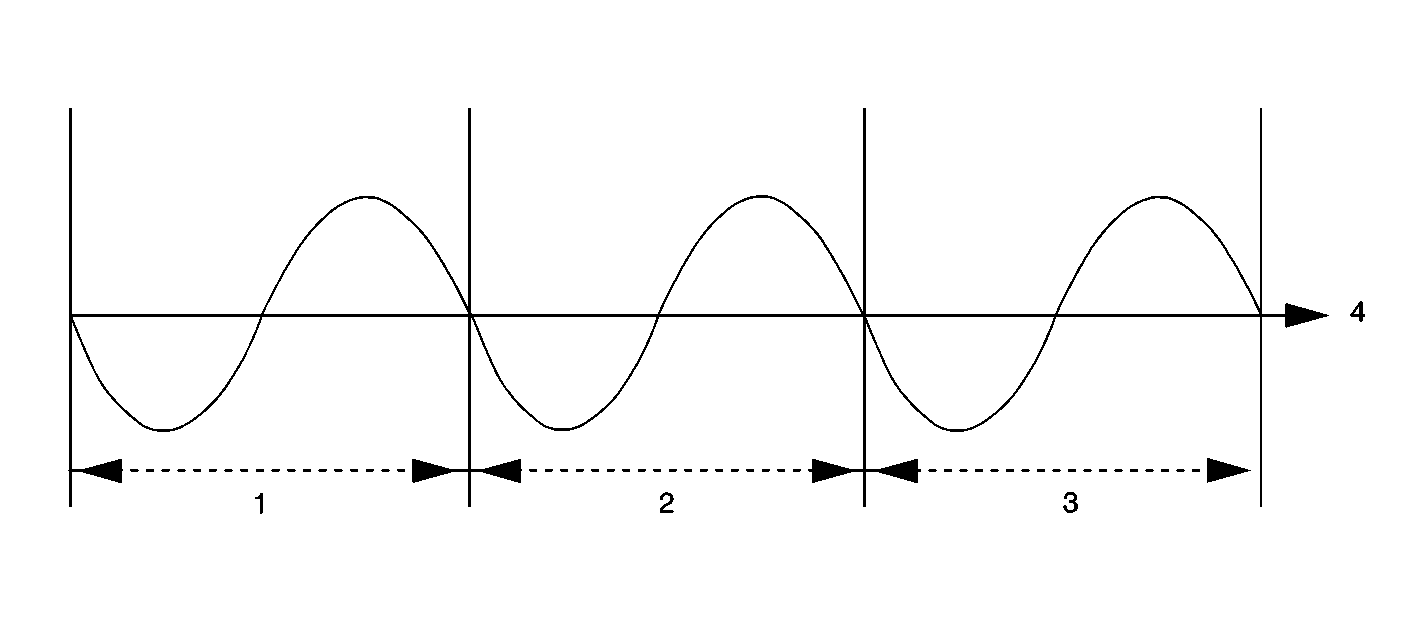Important: DO NOT attempt to repair a normal condition, or the customer will probably
be convinced that the vehicle has a problem. Customer satisfaction becomes
extremely difficult after this point.
The following are the 2 primary components of vibration
diagnosis:
| • | The physical properties of objects |
| • | The object's properties of conducting mechanical energy |
The repetitive up/down or back/forth movement of a component causes
most customer vibration concerns. The following are the common components
that vibrate:
Vibration diagnosis involves the following steps:
- Measure the repetitive motion and assign a value to the measurement
in cycles per second or cycles per minute.
- Relate the frequency to the rotational speed of a component that
is operating at the same rate or speed.
- Inspect and test the components for conditions that cause vibration.
For example, performing the following steps will help demonstrate the
vibration theory:

- Clamp a yardstick to the
edge of a table, leaving approximately 50 cm (20 in) hanging
over the edge of the table.
- Pull down on the edge of the stick and release while observing
the movement of the stick.
The motion of the stick occurs in repetitive cycles. The cycle begins
at midpoint, continues through the lowest extreme of travel, then back past
the midpoint, through the upper extreme of travel, and back to the midpoint
where the cycle begins again.
The cycle occurs over and over again at the same rate, or frequency.
In this case, approximately 10 cycles per second. If we measure the
frequency to reflect the number of complete cycles that the yardstick
made in one minute, the measure would be 10 cycles x 60 seconds
= 600 cycles per minute (cpm).
We have also found a specific amount of motion, or amplitude, in the
total travel of the yardstick from the very top to the very bottom. Redo the
experiment as follows:
- Clamp the yardstick to the edge of a table, leaving approximately
25 cm (10 in) hanging over the edge of the table.
- Pull down on the edge of the stick and release while observing
the movement of the stick.
The stick vibrates at a much faster frequency: 30 cycles per
second (1,800 cycles per minute). The total travel, or amplitude, is
less.
Vibration
Vibration is the repetitive motion of an object, back and forth, or
up and down. The following conditions cause most vehicle vibrations:
| • | The engine combustion process firing impulses |
Rotating components will vibrate with excessive imbalance or runout.
During vibration diagnosis, the amount of allowable imbalance or runout should
be considered a tolerance and not a specification. In other words, the
less imbalance or runout, the better.
A vibration concern will occur when the firing impulses of the engine
are not properly isolated from the passenger compartment.
A vibrating component operates at a consistent rate (km/h, mph, or RPM).
Measure the rate of vibration in question. When the rate/speed is determined,
relate the vibration to a component that operates at an equal rate/speed
in order to pinpoint the source. Vibrations also tend to transmit through
the body structure to other components. Therefore, just because the
seat vibrates does not mean the source of the vibration is in the seat.
Vibrations consist of the following three elements:
| • | The source -- the cause of the vibration |
| • | The transfer path -- the path on which the vibration travels
through the vehicle |
| • | The responder -- the component where the vibration is felt |

In the preceding figure, the source of the vibration is the unbalanced
tire. The transfer path is the route the vibrations travels through the vehicle's
suspension system into the steering column. The responder is the steering
wheel, which the customer reports as vibrating. Eliminating any one
of these three elements will usually correct the condition. From the
gathered information, decide which element makes the most sense to
repair. Adding a brace to the steering column may keep the steering
wheel from vibrating, but adding a brace is not a practical solution.
The most direct and effective repair would be to properly balance the
tire.

Vibration can also produce noise. As an example, consider a vehicle
that has an exhaust pipe which is grounded to the frame. The source of the
vibration is the engine firing impulses traveling through the exhaust.
The transfer path is a grounded or bound-up exhaust hanger. The responder
is the frame. The floor panel vibrates, acting as a large speaker,
which produces noise. The best repair would be to align the exhaust
system and correct the grounded condition at the frame. This would
eliminate the transfer path.
Cycle





